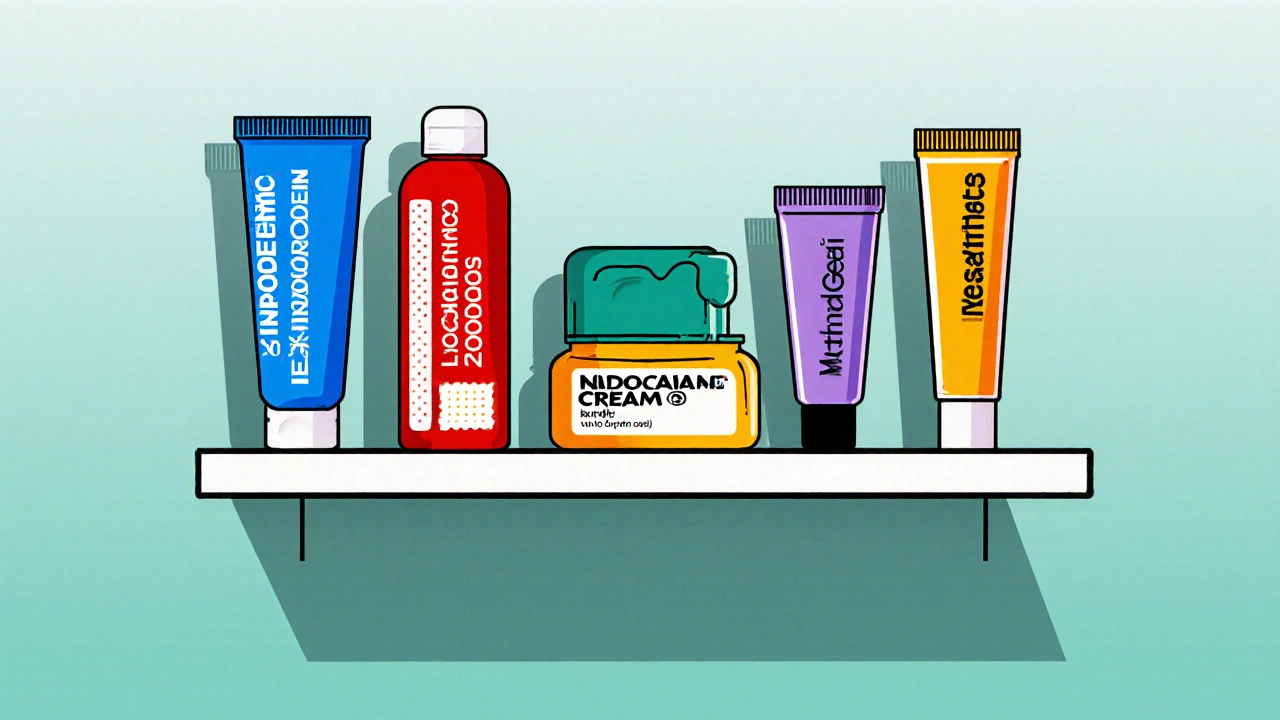Diclofenac Gel: What It Does, How to Use It, and What to Watch For
When you need fast, targeted pain relief without swallowing a pill, diclofenac gel, a topical nonsteroidal anti-inflammatory drug used to treat localized pain and inflammation. Also known as Voltaren gel, it delivers relief right where you need it—knees, elbows, wrists, or back—without the stomach upset that oral NSAIDs often cause. Unlike pills that circulate through your whole body, this gel stays mostly where you apply it, making it a smart choice for people managing osteoarthritis or minor sprains.
It works by blocking enzymes that trigger pain and swelling, but it’s not magic. You need to use it consistently—usually 3 to 4 times a day—for it to make a real difference. People with joint pain from arthritis often see improvement within a few days, but full results can take up to two weeks. It’s not meant for deep muscle injuries or broken skin. If you’ve tried ibuprofen pills and got a churning stomach, diclofenac gel might be your better option. But don’t use it if you’re allergic to aspirin or other NSAIDs. And never cover the area with a bandage unless your doctor says so—trapping heat can increase absorption and raise your risk of side effects.
Another thing to watch: topical NSAIDs, pain-relieving gels and creams that reduce inflammation without oral ingestion like diclofenac can still affect your kidneys or blood pressure if you use too much or use them for too long. This isn’t common, but it’s real. People with heart disease, high blood pressure, or kidney issues should talk to their doctor before using it daily. Also, avoid sunlight on the treated area—some users report mild skin reactions that get worse with UV exposure. And while it’s safe for most adults, it’s not approved for kids under 18 unless a doctor prescribes it.
Many users mix it with other treatments—heat wraps, physical therapy, even rest. That’s fine. But don’t combine it with other topical pain relievers unless your doctor says yes. Some creams contain menthol or capsaicin, and layering them can irritate your skin. You also shouldn’t use it right before or after a shower—wait at least an hour after applying to let it soak in. And wash your hands after each use, unless you’re treating your hands.
What you won’t find in the box: a cure. Diclofenac gel doesn’t rebuild cartilage or fix torn ligaments. It just makes the pain manageable so you can move better, sleep better, and stay active. That’s why it’s often part of a bigger plan—exercise, weight management, physical therapy. If you’ve been using it for more than three weeks and see no change, it’s time to check in with your provider. There might be another issue hiding under the pain.
Below, you’ll find real user experiences and expert breakdowns on how diclofenac gel fits into everyday pain management. From how it compares to oral meds to what to do if it doesn’t work, these posts cut through the noise and give you what actually matters.

Diclofenac Gel vs. Topical Pain Relievers: Pros, Cons & Alternatives
- Oct, 17 2025
- 9
A detailed comparison of Diclofenac Gel with other topical pain relievers, covering how it works, pros and cons, side effects, cost, and when to choose each option.
Categories
- Health and Wellness (51)
- Medicine (36)
- Health and Medicine (30)
- Women's Health (9)
- Mental Health (8)
- Men's Health (7)
- Beauty and Wellness (4)
- Health Information (4)
Archives
- December 2025 (19)
- November 2025 (25)
- October 2025 (27)
- September 2025 (14)
- August 2025 (3)
- July 2025 (2)
- June 2025 (2)
- May 2025 (3)
- April 2025 (4)
- March 2025 (4)
- February 2025 (2)
- January 2025 (3)
- online pharmacy
- medication safety
- dietary supplement
- health benefits
- dietary supplements
- prevention
- fertility
- online pharmacy Australia
- treatment
- treatment options
- benefits
- connection
- drug interaction
- drug interactions
- pregnancy
- Cancer Treatment
- depression medication
- antidepressants
- quality of life
- anxiety treatment
